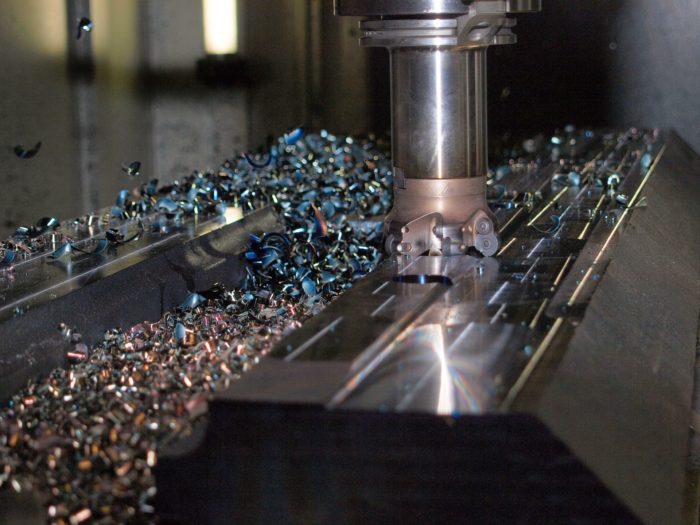Desktop Metal CNC
CNC machining is a manufacturing process in which pre-programmed computer software dictates the movement of factory tools and machinery. The process can be used to control a range of complex machinery, from grinders and lathes to mills and routers. With CNC machining, three-dimensional cutting tasks can be accomplished in a single set of prompts. CNC refers to computer numerical control. Today we will be comparing CNC methods to 3D Printing and additive manufacturing in terms of their places within a circular economy.
Transportation waste is not as large of a concern when it comes to CNC machining. It is important to have one’s material ready before they are to place the material within a CNC center. The layout of one’s factory or fabrication environment is more critical towards this type of waste. Similar thoughts can be arrived at in terms of additive manufacturing. Based on the types of material used for a CNC machine, it is slightly difficult to transport larger amounts of the metals used for these machines.
Inventory waste is mostly oriented towards what material you are using for the CNC process. Typically we are using metal materials. The type of materials typically used consist of brass, copper alloys, aluminum, steel, stainless steel, titanium, and plastics. The type of material is very important because of production needs. CNC machining is a subtractive process. Hence, the various materials will cause different shearings as well as carving residue and debris that will be produced during a cutting out of a piece.
CNC Waste
Waiting time in terms of CNC machining depends on the feed rate. Feeds specifically refers to the feed rate the tool advances through the material while speed refers to the surface speed that the cutting edge of the tool is moving and is needed to calculate the spindle RPM. Feed is generally measured in Inches Per Minute (IPM) in the US and speed is measured in Surface Feet per Minute. Feed speed as well as material density causes the amount of wait time to differ per manufactured part. Part geometry also has a role to play here as well as hardness. A CNC typically is faster than a 3D printer device, but this is again dependent on material and geometry.
Over-processing is not as much of a concern for both of these methods of manufacturing. CNC machining and 3D printing are both great at building quick prototypes of designs. Over-processing can become problematic in CNC when one wants to make very polished cuts of a material to have sharper edges and rounded surfaces. There may be an element of over-processing there that leads to time wasted.
Post processing is a big issue when it comes to 3D printers. Post processing issues are not as apparent with CNC parts. They typically are ready for deployment after they have been produced with excellent surface finishes.

Recyclability is apparent with various CNC waste materials post production. It is important to be constantly aware of the different products used. In order to recycle, it necessitates the separation of materials. This requires bins oriented towards specific materials labelled clearly near a CNC machine. Without this, most of the scrap will be left unattended and mix together to a point of difficult separation.
Overall the differences between CNC machines and 3D print are considerable. The sheer amount of waste material produced by a typical CNC is way more than a 3D printer. There are efficiency trade offs that are associated with 3D printers in terms of speed and material transportation. In the future advances to additive manufacturing will shrink the gap in terms of creating products in a more sustainable and additive manner versus a subtractive fashion.
Subscribe to Our Email Newsletter
Stay up-to-date on all the latest news from the 3D printing industry and receive information and offers from third party vendors.
You May Also Like
Precision at the Microscale: UK Researchers Advance Medical Devices with BMF’s 3D Printing Tech
University of Nottingham researchers are using Boston Micro Fabrication‘s (BMF) 3D printing technology to develop medical devices that improve compatibility with human tissue. Funded by a UK grant, this project...
3D Printing Webinar and Event Roundup: April 21, 2024
It’s another busy week of webinars and events, starting with Hannover Messe in Germany and continuing with Metalcasting Congress, Chinaplas, TechBlick’s Innovation Festival, and more. Stratasys continues its advanced training...
3D Printing Webinar and Event Roundup: March 17, 2024
It’s another busy week of webinars and events, including SALMED 2024 and AM Forum in Berlin. Stratasys continues its in-person training and is offering two webinars, ASTM is holding a...
3D Printed Micro Antenna is 15% Smaller and 6X Lighter
Horizon Microtechnologies has achieved success in creating a high-frequency D-Band horn antenna through micro 3D printing. However, this achievement did not rely solely on 3D printing; it involved a combination...






























